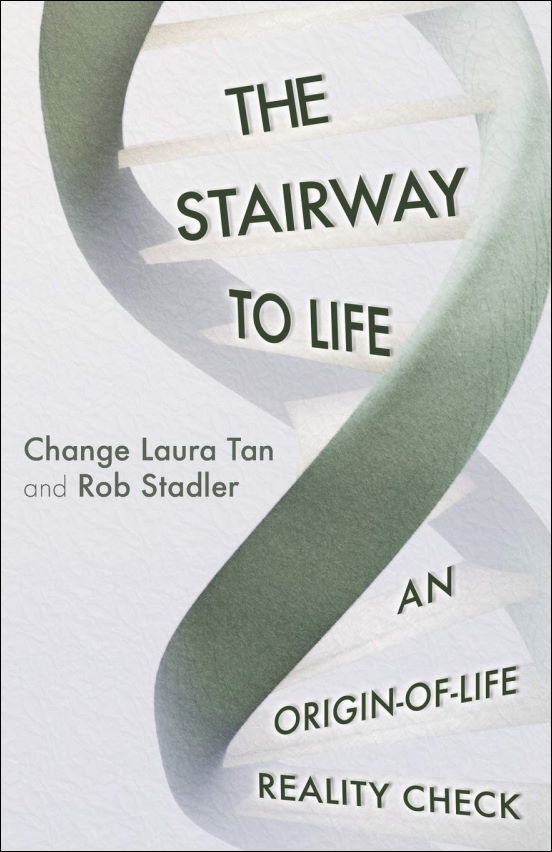Journal of Creation 37(3):90–92, December 2023
Browse our latest digital issue Subscribe
Enantiomeric amplification of L-amino acids: part 6—sublimation using Asn, Thr, Asp, Glu, Ser mixtures
Much effort has been expended to explain how proteins based on only L- amino acids (AAs) could have arisen naturally. Five AAs are known to form homochiral aggregates under special conditions: Asn, Thr, Asp, Glu, and Ser. Therefore, in a key experiment critiqued here, pure L-enantiomers of each of these five AAs were mixed 97.5:2.5 with a more-volatile aliphatic AA: Ala, Leu, Pro, or Val. However, since strong L-L interactions formed in these binary mixtures, sublimation always released more of the biologically wrong D-enantiomer into the environment. These experiments also illustrate how unrealistic the conditions are which researchers are using for origin of life purposes. In the experiments: 1) pure L-enantiomers of only five carefully selected AAs were used, each thoroughly ground and mixed with another volatile AA; 2) sublimation was conducted at very low pressure and ideal temperature; 3) the sublimate was trapped with a cold finger before contamination with racemic AA could occur; 4) sublimation was discontinued at the ideal time to prevent subliming all the AA; and 5) experiment duration was kept short to prevent the residue from being both racemized and thermally degraded.
This is Part 6 of a series critiquing possible explanations for a natural origin of the L-amino acids (AAs) needed to form proteins. Specifically, we continue to analyze processes whereby an initial small enantiomeric excess (e.e.) of L-AAs might have been extracted and separated (amplified) through natural means into a separate location. Without enantiomerically pure L-AAs and D-sugars, cellular life cannot exist.
Using Asn, Thr, Asp, Glu, and Ser mixtures at high temperature and low pressure
Only a few proteinogenic AAs have been shown to form homochiral aggregates, although in all cases, special laboratory conditions have been necessary.1 Racemic asparagine (Asn) and threonine (Thr) crystallize from aqueous solutions as conglomerates; supersaturated solutions of mixed aspartic acid (Asp) and glutamic acid (Glu) can produce enantiopure crystals; racemic serine (Ser) can form homochiral oligomers within a narrow temperature range in the gas phase and produce an almost enantiopure aqueous solution at its eutonic point.2
Tarasevych et al. decided to see whether high proportions of enantiopure samples of these five AAs could separate D- and L-enantiomers of racemic mixtures of other AAs.2 In the experimental setup, an aqueous solution of 975 mg enantiopure conglomerating AA was mixed with 25 mg of racemic AA, either Ala, Leu, Pro, or Val, and then the liquid was evaporated off. The solid powder was ground with a mortar and pestle and then partially sublimed during 14 hours at 100–105°C and 0.3–0.7 mbar.3 These conditions were selected to ensure that the five enantiopure AAs wouldn’t also sublimate.
The first sublimate produced was collected from a cold finger trap (see figure 1) and analyzed by GC (gas chromatography), leading to the results shown in table 1. In all cases, using an L-enantiomer for the less-sublimed AA produced sublimates with a D-enantiomeric e.e. of sublimate and vice-versa.
b Hydrochlorides
c Based on 2 or 3 experiments
To confirm that L-L and D-D interactions are stronger than L-D interactions, additional experiments were carried out using enantiopure Asn mixed with different concentrations of Ala (see table 2).
Note in table 2 that pure L-Asn with D-enriched Ala led to higher e.e.D (entries 1, 2, 4, 5, and 7). Analogously, pure D-Asn with L-enriched Ala led to higher e.e.L (entries 3 and 6). Consistent with these results, pure L-Asn mixed with L-enriched Ala led to lower e.e.L values (entries 8–10).2
b Based on 2 or 3 experiments
c The original paper claimed 80 L, which is surely wrong. The main text confirms that 80 D was meant.
In the studies discussed in part 4 of this series, Viedma et al. proposed that the enantioenrichment of sublimate would offer a natural means to obtain higher e.e.L values for some biological AAs.4-6 The experiments conducted by Tarasevych et al., however, produced the opposite results under other conditions, namely enantio-depletion of L-enantiomer was found in the sublimate.2 This would require an entirely different Origin of Life (OoL) narrative.
The results reported by Tarasevych et al. implied that L-L and D-D interactions between the AAs which sublimed with those which didn’t in the solid mixtures were stronger than L-D interactions. Therefore, when a large excess of pure L-enantiomer of the heavier non-sublimating AA was used more of the lighter D-enantiomer of the AA would sublimate, and vice-versa.
OoL researchers need to show how L-enantiomers for all the biological AAs could have formed. However, the experiments summarized in table 1 and table 2 demonstrate that L-AAs would lower the L/D proportion of other AAs in the environment after they sublimated, increasing the proportion of deleterious D-AAs. Since this is the opposite result to that desired, what about in the residue? Given that L-L interactions are stronger, would the L/D ratio necessarily increase for the non-sublimating AA there? The researchers neglected to perform this analysis. Being at a much higher temperature than the sublimate, this material would be thermally degraded, lowering the total amount of both L-AAs present there. Furthermore, racemization would occur faster in the hotter conditions, especially upon encountering moisture, lowering the e.e. Without careful laboratory intervention to time everything just right, the process described would be a good way to eliminate excess of L-AA present in nature.
Critique of this study
The authors wrote enthusiastically:
“The deracemisation of natural amino acids via sublimation has been accomplished for the first time.”2
This seems to be true, and they are to be congratulated. They have expertly conducted a series of well-designed experiments and discovered noteworthy results. But there is a big difference between clever chemists finding a solution to a problem and expecting this to also occur with no deliberate guidance. Here are some reasons why this work does not show that e.e. amplification would occur naturally to produce pure biologically relevant AAs.
- The process can only be applied to a minority of biological AAs which sublime more easily than the five enantioenriching AAs.
- The results required the presence of 97.5% of a specific AA having 100% enantiopurity before life would have existed. This is not plausible. The AA would have been contaminated with many other substances and/or found bound in large complex molecules and not free AA.
- To avoid thermal decomposition, extremely low pressures were used, and a temperature of 100–105°C. This poses multiple problems:
- Where on primordial earth would such conditions occur? (Atmosphere pressures are ~1,013 mbar and nowhere near 0.3–0.7 mbar!). Note that the authors claimed that their “results suggest an endogeneous alternative based on the sublimation due to the presence of enantiopure materials.”2
- Relevant for OoL models would be a time period after a putative Late Heavy Bombardment between ca. 4.0 and 3.8 billion years ago.7 This event would have eliminated any e.e. in AAs. Where could this high-temperature and low-pressure environment with pure or almost pure non-volatile AAs have existed?
- The AAs were first thoroughly mixed in aqueous solution under ambient conditions of temperature and pressure; then the water was removed. The sublimation experiments, however, were conducted under entirely different conditions, at >100 °C and <1 mbar.
- Nature would not have provided a mortar and pestle nor anything analogous to thoroughly homogenize solids before initiating the sublimation process.
- It is not plausible that a volatile AA would have been added suddenly to a large amount of an enantiopure AA of the right kind. Under the experimental conditions, volatile AAs would have fully sublimed and dissipated long ago.
- The researchers discontinued sublimation at exactly 14 hours. Not 14 seconds or 14 millennia. Why would sublimation not have continued for a few more hours until the entire 2.5 mg had sublimed, freeing all those AAs as racemic mixtures once again?
- Under natural conditions nothing would have prevented the sublimate and residue from simply remixing.
Clearly this research offers no support that excess L-AAs could have arisen naturally. An important lesson from studies like these is that under very unnatural conditions it is sometimes possible to separate L-AAs and at other times D-AAs temporarily. The effects are negligibly small and, without deliberate experimental guidance, tend to cancel, hindering formation of a net e.e.L.
References and notes
- Homochiral aggregates are D-only crystals and L-only crystals mixed in equal amounts. Racemic crystals contain an equal amount of D and L enantiomers within the same crystal. Only aggregates could be separated physically into D- and L-amino acid portions. Return to text.
- Tarasevych, A.V., Sorochinsky, A.E., Kukhar, V.P., and Guillemin, J-C., Deracemization of amino acids by partial sublimation and via homochiral self-organization, Orig. Life Evol. Biosph. 43:129–135, 2013 ǀ doi:10.1007/ s11084-013-9333-6. Return to text.
- For comparison, normal atmospheric pressure is ~1,013 mbar. Return to text.
- Viedma, C., Noorduin, W.L., Ortiz, J.E., de Torres, T., and Cintas, P., Asymmetric amplification in amino acid sublimation involving racemic compound to conglomerate conversion, Chem. Commun. 47:671−673, 2011 ǀ doi:10.1039/ c0cc04271d. Return to text.
- Viedma, C., Ortiz, J.E., de Torres, T., and Cintas, P., Enantioenrichment in sublimed amino acid mixtures, Chem. Commun. 48:3623−3625, 2012 ǀ doi:10.1039/c2cc18129k. Return to text.
- Perry, R.H., Wu, C.P., Nefliu, M., and Cooks, R.G., Serine sublimes with spontaneous chiral amplification, Chem. Commun. 1071−1073, 2007 ǀ doi:10.1039/B616196K. Return to text.
- Claeys, P. and Morbidelli A., Late Heavy Bombardment; in: Gargaud, M. et al. (Eds.), Encyclopedia of Astrobiology, Springer, Berlin, Heidelberg, 2015 ǀ doi:10.1007/978-3-662-44185-5_869. Return to text.







Readers’ comments
Comments are automatically closed 14 days after publication.